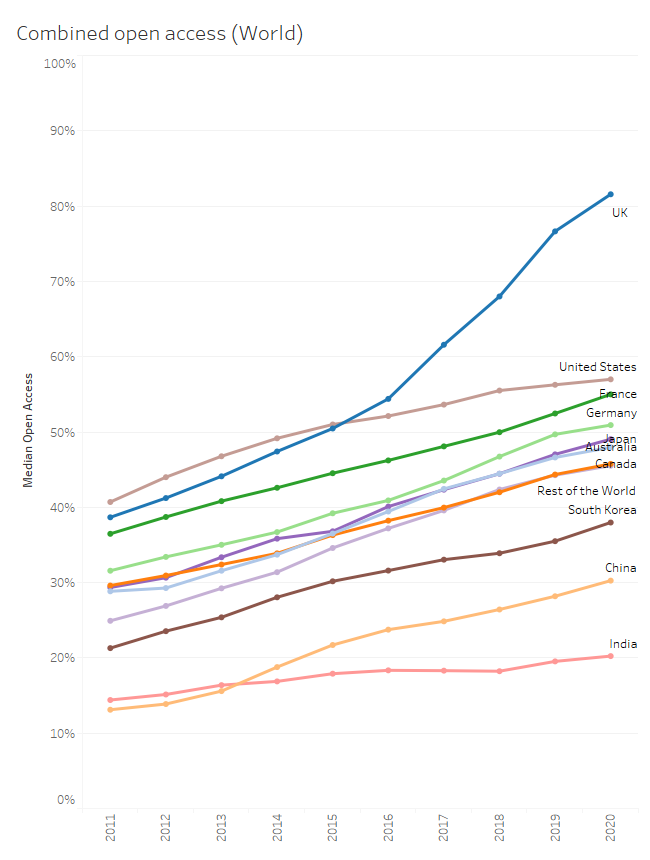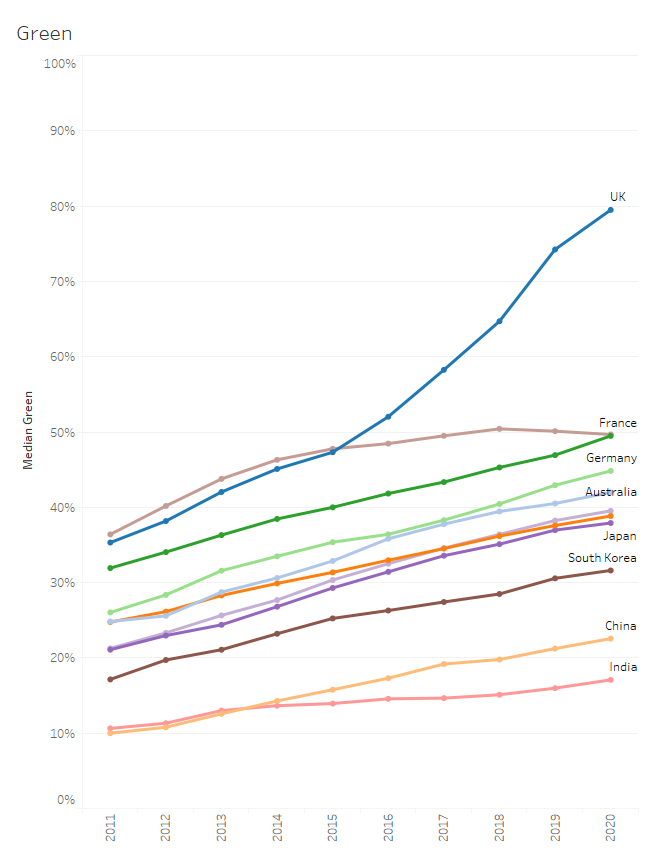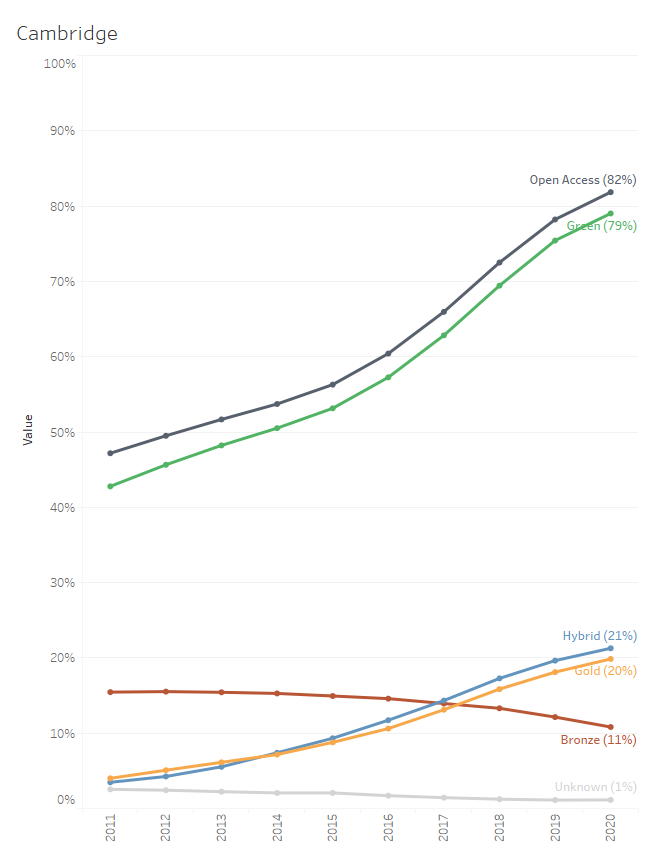In our related blog ‘Hybrid Open Access – an analysis‘ we explored the origins and issues with hybrid open access. Here we describe what funders are allowing or not in relation to payments for hybrid Open Access APCs.
Funding agencies and hybrid
Of the 179 Open Access funds listed in the Open Access Directory, 99 (55%) do not allow hybrid publishing; 78 (44%) do, or do not specify. The two remaining funds (1%) allow hybrid but either discourage it or require that the publisher have an offsetting scheme in place. This shows a strong move away from hybrid since 2014, when only 39% of funds rejected hybrid – a rejection of hybrid is now the majority position.
What’s more, these anti-hybrid funders now include some major organisations, particularly in Europe. The EU FP7 post-grant pilot, for example, is only open to authors publishing in fully Open Access journals, and the Netherlands Organization for Scientific Research (NWO) has considered hybrid ineligible for funds since December 2015.
According to a news story in Nature in January this year, the Norwegian Research Council and the German Research Foundation both pay Open Access fees for researchers but do not permit the payment of hybrid costs. The Austrian Science Fund has capped Open Access payments at a certain level; if researchers want to publish in more expensive journals (often the hybrids), they must find the extra cash themselves.
In 2013 Science Europe declared in a position statement that:
The Science Europe member organisations […] stress that the hybrid model, as currently defined and implemented by publishers, is not a working and viable pathway to Open Access. Any model for transition to Open Access supported by Science Europe member organisations must prevent ‘double dipping’ and increase cost transparency.
UK funders’ position on hybrid
The Wellcome Trust, while not yet abandoning hybrid entirely, voiced considerable wariness in its 2014-15 report, and has warned that stricter action will follow if there is not an improvement in publisher behaviour:
We believe declaring that Wellcome funds cannot be used to pay for hybrid OA is too blunt an instrument, unfairly penalising those publishers which provide a good service at a reasonable price, and that it would slow down the transition to a fully OA world – the position we ultimately want to get to.
However, doing nothing is no longer a valid option. If hybrid publishers are unable to commit to the Wellcome Trust’s set of requirements and do not significantly improve the quality of the service, then classifying those hybrid journals as “non-compliant” will be an inevitable next step.
In 2015 RCUK published an independent review into the implementation of their Open Access policy which, while notably less combative on the issue of hybrid, nevertheless noted the expensiveness of the option and suggested potential future action:
The panel noted that average APCs for articles published in hybrid journals were consistently more expensive than in fully open access journals (despite the fact that hybrid journals still enjoyed a revenue stream through subscriptions). The panel recommends that RCUK continues to monitor this and if these costs show no sign of being responsive to market forces, then a future review should explore what steps RCUK could take to make this market more effective.
In the Universities UK Open Access Coordination Group’s report “Open access to research publications – Independent advice” the author, Professor Adam Tickell noted:
An alternative approach would be to consider whether funding Gold Open Access in Hybrid Journals where there are no equivalent offsets in subscription costs is a good use of public funds. During the course of working on this report, I met with the Publishers Association and Elsevier and I do not believe that the major publishers would find this slight change of course challenging.
Library funds and hybrid
In January this year the Canadian Association of Research Libraries (CARL) published Library Open Access Funds in Canada: review and recommendations. Amongst the summary of fund management recommendations was ‘do not fund hybrid journals‘.
SPARC maintains an Open Access Campus Funds page, which provides advice. The document “Campus-based open-access publishing funds: a practical guide to design and implementation” contains a whole section on deciding whether to support hybrid, noting “Many institutions that have functioning Open-access Funds have indicated that the toughest decision they made concerned hybrid journal eligibility”.
US library-run funds
Zuniga, H. & Hoffecker, L. (2016). Managing an Open Access Fund: Tips from the Trenches and Questions for the Future. Journal of Copyright in Education and Librarianship, 1(1), 1-13 discusses the thinking behind a library-run Open Access fund at University of Colorado Health Sciences Library and specifies that funding will only be available for fully Open Access journals and not hybrid ones.
A recent discussion on one of the lists (which is dominated by American institutions) about library funds for open access revealed the very strong preference to support only fully Open Access journals. Of the responses from the US libraries, nine funds did not support hybrid and two did under particular circumstances. The US is not subject to the gold Open Access policies that the UK is:
- University of Rhode Island only supports “articles published in fully open access, peer-reviewed scholarly journals” that are listed in the DOAJ with its Open Access Fund
- Texas A&M University Libraries’ Open Access to Knowledge Fund (OAKFund) notes “”Hybrid” Open Access publication venues and publication venues with delayed Open Access models are ineligible.”
- The University of Pittsburgh’s Open Access Fee Author Policy states “Journals with a hybrid open-access model or delayed open-access model are not eligible.”
- The One University Open Access (OA) AuthorFund at the University of Kansas supports only publication in “an entirely open access journal. Journals with a hybrid open-access model or delayed open-access model are not eligible”. A definition of hybrid journal is provided. – 2015 article in JLSC “Campus Open Access Funds: experiences of the KU “One University” Open access author fund”.
- Cornell University’s Open Access Publication Fund does not mention hybrid specifically but the wording implies the fund supports only fully Open Access journals, noting “Since open access publishers do not charge subscription or other access fees, they must cover their operating expenses through other sources.”
- Concordia University’s Open Access Author Fund states “the article must be published in a fully open access journal. Traditional subscription-based or ‘hybrid’ journals that offer an open access option for a fee are not eligible.”
- University of Oklahoma’s Open Access (OA) Subvention Fund Policy refers to “true open access journals”, noting “Articles with a hybrid or delayed OA model are not eligible through this fund”
- The information about University of California San Francisco’s Open Access Publishing Fund includes a section about why it does not support hybrid
- Northwestern University’s Open Access Fund describes an acceptable open access journal as a “journal published in a fully open access format based on a published schedule of article processing fees”
That said, there were a couple that are considering support for hybrid:
- Wayne State University’s Scholars Cooperative Open Access Fund states “Hybrid open access arrangements (“paid open access” or “open choice”) may be considered on a case-by-case basis”.
- Wake Forest University Open Access Fund does support hybrid, but the cost for all open access is split three ways between the Library the Research Office and the author.
UK library-run funds
In November last year the UCL, Newcastle and Nottingham Universities published the results of a survey with Jisc: “Institutional policies on the use of Open Access Funds“. The report noted that of the respondents 18 institutions in the UK had a central institutional fund (not provided by RCUK/COAF). The report noted there were different approaches to using these central funds. At the time four institutions paid for papers in fully Open Access journals only; four paid for papers in both fully Open Access and hybrid journals, without encouraging authors in favour of Green or Gold; and five institutions encourage authors to choose Green where possible.
In response to a list query in October 2016 (which is not a comprehensive survey by any means), there was a mixture of arrangements in the UK library-run funds. Four funds did not support hybrid, four did, and there were three that supported them in particular circumstances.
Some UK funds are primarily non-hybrid with a small number of exceptions.
- University College London has a fund which provides limited funds “for other UCL corresponding authors who are full (not honorary or visiting) members of staff or students where the funder does not cover open access charges”. This fund generally only pays for papers in fully OA journals. When it comes to hybrids the policy is very much to recommend Green, but the fund does occasionally pay for papers in hybrid journals “where the author makes a case for it”.
- The University of Bath has a Bath open access fund for journals that operate “a ‘Gold’ or paid Open Access model only AND the journal is a Q1 title as measured by Journal Citation Reports or SciMago Journal Indicators”. Note that this fund will support hybrid by exception, with Associate Dean agreement.
- Lancaster University has a small fund available with strict criteria for when it can be used. The research paper must both be likely to be rated as 4* in the next REF and be the most appropriate place to publish and does not offer a compliant green route or is an open access only journal. Applications need approval from the Heads of Department and Associate Dean for Research.
Other funds do not distinguish between hybrid and fully OA journals:
- King’s College London are in the second pilot year of an Open Scholarship Fund which currently does not distinguish between hybrid and full open access journals – but this may be considered if the funds are exhausted.
- Northumbria University Newcastle has an institutional Open Access fund to cover APCs in both fully gold and hybrid journals.
- Liverpool University has an institutional open access fund here that has very minimal criteria (CC BY, no retrospective OA, no page or colour charges) that pays both hybrid and fully OA APCs. The fund is reviewed every six months.
- Queen Mary University will be starting to offer a small institutional fund this year to cover non funded research which will support hybrid
There are some UK institutions where no central fund exists but Departments or Faculties have established their own funds with their own rules.
Conclusions
The increase in funds that do not allow payment for hybrid since 2014 indicates that increasingly the gloss has come off hybrid. Originally considered to be a transition method towards fully Open Access journals, the lack of movement towards this outcome has meant a tightening by funders on what can be spent on hybrid. It will be interesting to revisit this in another two years’ time.
Published 24 October 2016
Written by Dr Danny Kingsley and Dr Philip Boyes





